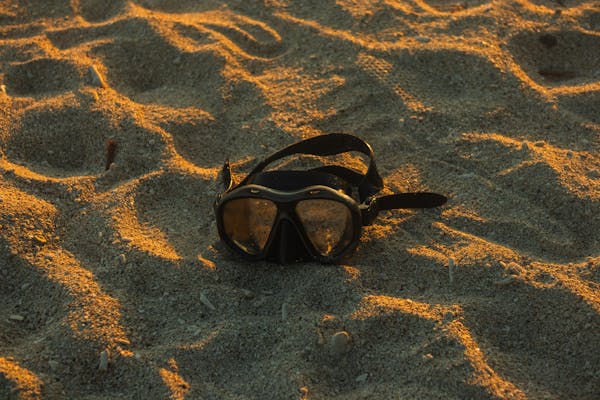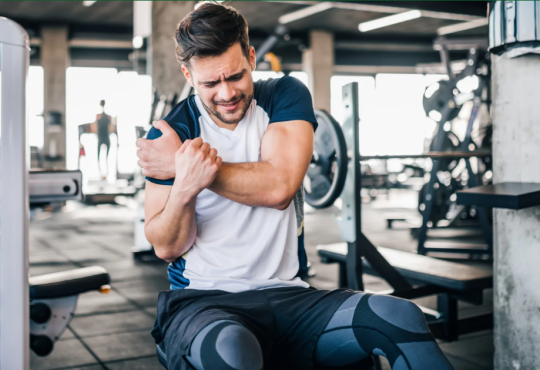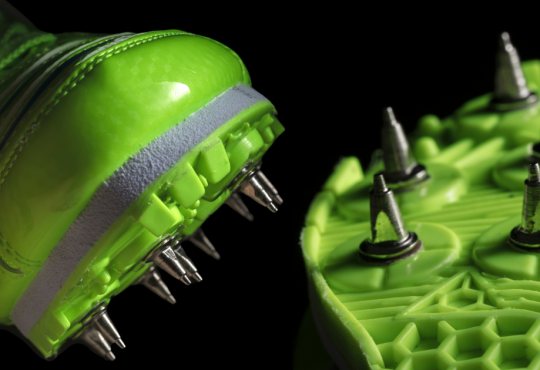Swimming is not only a popular recreational activity but also an essential life skill that promotes fitness, relaxation, and fun. Whether you are a novice swimmer taking your first strokes or an experienced competitor training for the Olympics, having the right gear is crucial for enhancing your performance, comfort, and safety in the water. In this article, we will explore the essential swimming gear that every swimmer should consider, regardless of their skill level.

Swimwear
Types of Swimwear
The foundation of any swimmer’s wardrobe is their swimwear. Choosing the right swimwear is essential for both comfort and performance. Here are some popular types of swimwear:
- Swim Trunks: Commonly worn by men, swim trunks are typically made from lightweight, quick-drying materials. They offer a relaxed fit, allowing for a full range of motion. Look for swim trunks with an inner mesh lining for added comfort and support.
- Swim Briefs: Often referred to as “Speedos,” swim briefs provide minimal coverage and are designed for competitive swimmers. Their streamlined fit reduces drag, making them ideal for racing. Available in various styles and colors, swim briefs are a favorite among athletes due to their sleek design.
- Rash Guards: These are form-fitting tops made from UV-protective fabric, commonly used in open water swimming. They provide protection from the sun and prevent chafing, making them an excellent choice for long swim sessions. Choose a rash guard with flatlock seams to minimize irritation.
- One-Piece Suits: Popular among women, one-piece swimsuits offer coverage and support. They are available in various styles, from athletic cuts to fashionable designs. Look for features like adjustable straps and built-in support for enhanced comfort during vigorous activity.
- Bikinis: Bikinis provide less coverage and are often preferred for leisure swimming. While they may not be the best choice for competitive swimming, they can be comfortable for casual use. Opt for chlorine-resistant materials if you swim frequently in pools.
Choosing the Right Swimwear
When selecting swimwear, consider the following factors:
- Fit: Ensure that your swimwear fits snugly without being too tight. It should allow for a full range of motion without causing discomfort. Trying on different brands and styles can help you find the best fit for your body type.
- Material: Look for swimwear made from chlorine-resistant fabrics for longevity. Materials like polyester and PBT (Polybutylene Terephthalate) are excellent options. If you swim regularly, consider investing in high-quality swimwear that can withstand chlorine damage.
- Style: Choose a style that you feel confident and comfortable in, as this can enhance your overall swimming experience. Consider your swim environment and personal preferences when making your selection.
Swim Caps
Swim caps are an essential piece of swimming gear for various reasons. They help to keep your hair dry, reduce drag, and provide a layer of warmth in cooler waters.
Types of Swim Caps
- Silicone Caps: Durable and long-lasting, silicone swim caps are comfortable and create a smooth surface for minimal drag. They are easy to put on and take off, making them ideal for both casual and competitive swimmers. Look for caps with ear pockets if you need additional comfort.
- Latex Caps: These are more affordable but can be less comfortable than silicone. They tend to create more drag, making them less suitable for competitive swimmers. However, latex caps are lightweight and can be a good option for casual swimmers or training.
- Neoprene Caps: Ideal for open water swimming, neoprene caps provide insulation and warmth. They are thicker and can help retain heat in colder waters, making them essential for triathletes and those swimming in chilly environments.
Benefits of Swim Caps
- Drag Reduction: Swim caps help streamline your body in the water, reducing resistance and allowing for faster swimming. This is particularly important for competitive swimmers looking to shave off seconds from their times.
- Hair Protection: They protect your hair from chlorine damage and keep it out of your face while swimming. If you have long hair, consider a cap with more coverage to prevent tangling.
- Visibility: Brightly colored swim caps can enhance visibility in open water, making it easier for lifeguards and fellow swimmers to spot you. Safety is paramount, especially during outdoor swimming.
Goggles
Goggles are one of the most critical pieces of essential swimming gear. They protect your eyes from chlorine and provide clear vision underwater.
Types of Goggles
- Training Goggles: These are designed for comfort and clarity during practice. They often have a wider lens and adjustable straps for a secure fit. Look for anti-fog features to maintain clear vision during your swim.
- Competitive Goggles: Streamlined and fitted for minimal drag, these goggles are favored by competitive swimmers. They offer a snug fit and come in various lens options for different lighting conditions. Opt for mirrored lenses for outdoor competitions to reduce glare.
- Open Water Goggles: Designed for outdoor swimming, these goggles typically feature larger lenses for better peripheral vision and often come with tinted or polarized lenses to reduce glare. Ensure they have a secure fit to prevent water leakage.
Choosing the Right Goggles
When selecting goggles, consider the following:
- Fit: Ensure a watertight seal without being too tight. Adjustable straps can help achieve a perfect fit. It’s advisable to try them on before purchasing or check return policies if buying online.
- Lens Type: Clear lenses are ideal for indoor swimming, while tinted or mirrored lenses work best for outdoor conditions. Some goggles also feature interchangeable lenses, allowing for customization based on your needs.
- Comfort: Look for features like soft silicone gaskets for a comfortable fit around the eyes. Consider options with wider lenses for better visibility and reduced eye strain.
Swim Fins
Swim fins are a valuable addition to your essential swimming gear, especially for training purposes. They help improve your kick technique, build leg strength, and increase your speed in the water.
Types of Swim Fins
- Short Fins: These are ideal for developing power and technique without overly straining the legs. They promote a fast kick and are great for beginners. Short fins help swimmers focus on kick mechanics while maintaining a natural body position.
- Long Fins: Longer fins provide more propulsion and are useful for experienced swimmers looking to build strength and endurance. They can be particularly helpful for training sets focused on speed.
Benefits of Swim Fins
- Improved Technique: Fins help swimmers focus on their kick technique, allowing for better body positioning and propulsion. They can also aid in developing a more efficient flutter kick.
- Increased Speed: Fins allow for faster swimming, helping swimmers to develop a better sense of timing and rhythm. This can be particularly beneficial when training for sprint events.
- Strength Training: Using fins in your training regimen can help build leg strength and improve overall swimming performance. Regular use can enhance muscle endurance, which is crucial for longer races.
Pull Buoys
Pull buoys are essential training tools for swimmers looking to enhance their upper body strength and improve their swimming technique.
What is a Pull Buoy?
A pull buoy is a foam device placed between the legs while swimming. It keeps the lower body afloat, allowing swimmers to focus on their arm strokes and upper body technique. This simple tool can significantly enhance your swimming workouts.
Benefits of Pull Buoys
- Upper Body Focus: Pull buoys help isolate the upper body, allowing swimmers to concentrate on their strokes without worrying about kicking. This isolation can lead to improvements in stroke efficiency and power.
- Improved Body Positioning: They promote better body alignment in the water, enhancing overall technique. A correct body position can lead to more streamlined swimming and reduced drag.
- Strength Building: Regular use of pull buoys can lead to increased upper body strength, benefiting overall swimming performance. Incorporating pull buoy sets into your routine can help break through training plateaus.
Kickboards
Kickboards are another vital component of essential swimming gear, especially for beginners and those looking to improve their kick technique.
What is a Kickboard?
A kickboard is a buoyant foam board that swimmers use to support themselves while practicing their kicks. They come in various shapes and sizes to accommodate different skill levels.
Benefits of Kickboards
- Kick Technique Improvement: Kickboards allow swimmers to focus solely on their kicks, helping to develop better technique. You can use kickboards for drills targeting different kicks, such as flutter, breaststroke, or dolphin kicks.
- Confidence Building: They provide beginners with additional support and stability, boosting confidence in the water. Many swim schools incorporate kickboards into lessons for this reason.
- Endurance Training: Using kickboards can enhance leg endurance, which is crucial for competitive swimming. Regular kickboard workouts can also improve your overall cardiovascular fitness.
Water Bottles
Staying hydrated is essential for any athlete, and swimmers are no exception. Having a water bottle on hand during practice or competition is crucial for maintaining optimal performance.
Types of Water Bottles
- Reusable Water Bottles: These are eco-friendly options made from materials like stainless steel or BPA-free plastic. They can keep drinks cold or hot for extended periods, promoting hydration before and after your swim.
- Hydration Packs: Ideal for open water swimmers, hydration packs are worn on the back and allow for hands-free hydration. They are especially useful during long-distance swims or triathlons.
Importance of Hydration
- Performance Enhancement: Proper hydration can significantly improve swimming performance and endurance. Dehydration can lead to fatigue and decreased concentration, negatively affecting your swim.
- Recovery Support: Staying hydrated aids in muscle recovery post-swimming, helping to prevent fatigue and cramps. Make it a habit to hydrate before, during, and after your swim sessions.
Swim Bags
Having a reliable swim bag is crucial for transporting your essential swimming gear. A good swim bag can help keep you organized and ensure you have everything you need for your swim sessions.
Features to Look For
- Size and Capacity: Choose a bag with enough space to fit all your gear, including swimwear, towels, and accessories. Ensure it has designated compartments to keep wet items separate.
- Water Resistance: Look for a bag made from water-resistant materials to keep your belongings dry. Many swim bags also feature waterproof compartments for electronics and valuables.
- Ventilation: A bag with mesh compartments can help air out wet items, preventing odors and mildew. Good ventilation is essential for maintaining the longevity of your gear.
Types of Swim Bags
- Backpacks: These are versatile and easy to carry, making them a popular choice for swimmers. Look for backpacks with padded straps for added comfort during transport.
- Duffle Bags: Duffle bags offer more space for larger gear and are often easier to access. They typically have a wide opening, making it easy to grab items on the go.
- Tote Bags: Ideal for casual swimmers, tote bags provide easy access to essentials without the need for complex compartments. They are lightweight and can be used for various activities beyond swimming.
Swim Towels
A quality swim towel is an often-overlooked piece of essential swimming gear. It’s important for drying off after a swim and can enhance your overall swimming experience.
Types of Swim Towels
- Microfiber Towels: These towels are lightweight, quick-drying, and compact, making them ideal for swimmers. They absorb water efficiently and are easy to pack.
- Cotton Towels: Traditional cotton towels are absorbent but can be heavier and take longer to dry. They can be more comfortable for lounging at the pool or beach.
Benefits of Swim Towels
- Quick Drying: Microfiber towels are designed to dry quickly, reducing the chances of mold and odors. This is especially beneficial for swimmers who train frequently.
- Compactness: These towels are easy to pack and carry, making them convenient for travel. Look for options that come with a carrying pouch for added convenience.
Additional Accessories
- Snorkels Swim snorkels allow swimmers to focus on their strokes without having to turn their heads to breathe. This is particularly useful for improving technique and endurance. Snorkels are often used in training to help swimmers maintain a streamlined position.
- Swim Paddles are used to enhance upper body strength and technique. They provide resistance during swimming, helping to build muscle and improve stroke mechanics. When using paddles, it’s essential to focus on proper form to prevent strain.
- Lap Counters For competitive swimmers, lap counters can be useful tools for keeping track of lap counts during training sessions. Many lap counters are digital and can be worn on the wrist for easy access.
Equipping yourself with the right essential swimming gear is vital for maximizing your performance and enjoyment in the water. Whether you are swimming for leisure, fitness, or competition, the right gear can make all the difference. From swimwear and goggles to training aids like pull buoys and kickboards, investing in quality equipment will help you swim better and feel more comfortable in the water.
Remember, the goal is to find gear that fits your individual needs and preferences. As you progress in your swimming journey, continually assess and update your gear to ensure you are always prepared for your next swim. Embrace the journey of improvement, and enjoy every moment spent in the water. Happy swimming!





